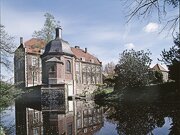History
During the last four decades, an increasing number of children and adolescents diagnosed with leukemia and lymphoma was systematically enrolled into national and international multicenter clinical trials. The BFM study group was founded 1975 in Germany, when Hansjörg Riehm in Berlin (B), Bernhard Kornhuber in Frankfurt (F) and Günther Schellong in Münster (M) initiated the first multicenter BFM trial. The BFM treatment concept developed by Hansjörg Riehm in the early 1970s was based on a very intensive chemotherapeutic approach employing eight different drugs and led to a revolutionary increase in survival of children and adolescents with acute lymphoblastic leukemia. Since that time, the so-called BFM treatment backbone has remained an essential component of many pediatric and adult protocols for the treatment of acute lymphoblastic leukemia. The common BFM backbone as a unifying feature has led to successful collaborative evolvements of therapy by a growing number of national study groups.
Since more than two decades, an ever growing number of cooperative study groups worldwide work together under the roof of the I-BFM Study Group to further improve treatment for leukemia and lymphoma in joint actions. The I-BFM Study Group was initiated in 1987 as a "Family Get Together" of the national ALL study groups of Austria (BFM), France / Belgium (EORTC-CLG), Germany (BFM), Italy (AIEOP) and The Netherlands (DCLSG). Their aim was to compare treatment modalities in childhood ALL in a workshop atmosphere, and to develop common standards for diagnosis and treatment. By now, 28 study groups of 34 countries![[PDF]](/images/pdf.gif) are members of the I-BFM Study Group.
are members of the I-BFM Study Group.
Since its early beginnings, the I-BFM Study Group gathers once a year and has become an important international platform for the promotion of research and clinical care for children and adolescents with leukemia and lymphoma. The next Annual meeting will be the 21st and will be held in April in Antalya, Turkey.
Overview of I-BFM-SG Annual Meetings![[PDF]](/images/pdf.gif)
